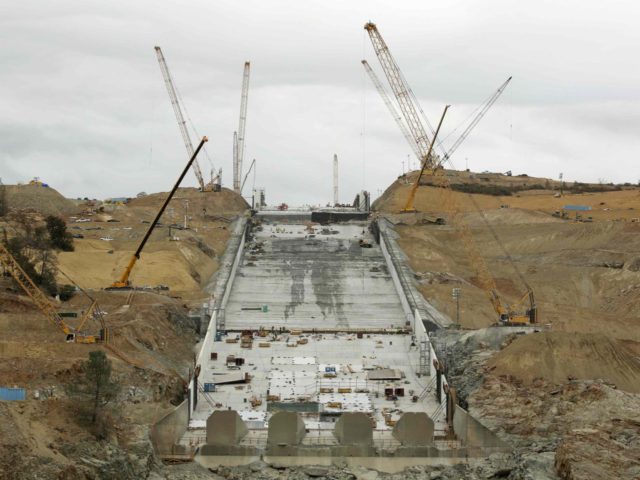The California Department of Water Resources acknowledged this week that many cracks have appeared in the new concrete of the Oroville Dam spillway, which cost over $500 million to repair.
The State of California is believed to have spent $100 million each month on Oroville Dam during February, March and April in a crisis effort to try to stabilize America’s tallest dam, which suffered a near collapse and forced the evacuation of 200,000 downstream residents earlier this year.
The Kiewit Corporation, which was issued a $275 million contract in April to repair both of Oroville Dam’s main and emergency spillways, poured a 1,700-foot cement top sheet and then roller-compacted and smoothed the spillway’s surfaces shortly before the November 1 contract deadline. The California Department of Water Resources (DWR) inspected the work and certified the first phase of the massive repair job was completed on time.
But the Sacramento Bee reported that cracks were first detected in September “when the first phase was nearing completion.” The Federal Energy Regulatory Commission (FERC), which has federal oversight over the California owned dam, instructed DWR on October 2 to investigate “cracking of the erosion resistant concrete” on the repaired spillway and to recommend any further steps necessary to address infrastructure risks.
The California Division of Dams wrote a letter to FERC on November 7 to reassure regulators that “the presence of hairline cracks was anticipated and is not expected to affect the integrity of the slabs.” DWR spokeswoman Erin Mellon added, “All concrete has this result in the placement. It’s just physics of how concrete works.”
But KQED reported that Robert Bea, a professor emeritus of civil engineering and founder of the highly respected UC Berkeley Center for Catastrophic Risk Management, stated, “Cracking in high-strength reinforced concrete structures is never to be expected.” He added that when large volumes of water cascade down the spillway at speeds approaching 90 miles-per-hour, even small cracks could increase stresses on concrete.
The CCRM has issued several reports documenting that the state was aware of serious cracking in the Oroville Spillway as far back as a 1998 inspection report. DWR did try to patch some cracks and fill up visible voids. But CCRM dam experts stated that finding hollow areas is like trying to find a stud behind a wall by tapping it with a hammer.
Bea’s group is especially alarmed by green grass that has continued to grow on the dam’s abutments during the hot summer and fall. The lush green grass indicates there has been seepage through the dam face for about 50 years. CCRM does not accept DWR’s explanation that the seepage is not a risk, because it is just some “natural springs.” CCRM warns that any seepage through an earth-fill dam should be extremely worrisome.

COMMENTS
Please let us know if you're having issues with commenting.